Introduction
 The currants or Ribes contains some of the most important bush fruits in Europe. Although most of the research at SCRI is related to the breeding of blackcurrants entomological research has concentrated on understanding phenology of the mites of the family Cecidophyopsis in collaboration with researchers elsewhere in the World and the damage they do.
The currants or Ribes contains some of the most important bush fruits in Europe. Although most of the research at SCRI is related to the breeding of blackcurrants entomological research has concentrated on understanding phenology of the mites of the family Cecidophyopsis in collaboration with researchers elsewhere in the World and the damage they do.
Blackcurrant gall mite
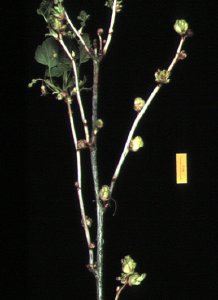
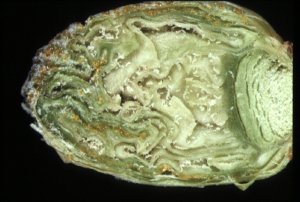
The most important mite species is the blackcurrant gall mite (Cecidophyopsis ribis), the vector of Blackcurrant Reversion Virus. C. ribis feed within the bud causing the characteristic galled buds that fail to open in the spring. Fortunately, commercially blackcurrant gall mite resistant blackcurrants cultivars are now becoming available. Cultivar Ben Hope and several advanced genotypes now show high levels of resistance. The release of gall mite resistant cultivars is timely as the number of suitable acaricides approved for their control declining rapidly.
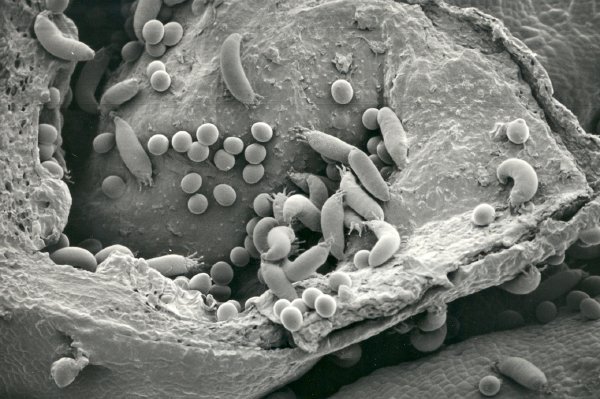
| 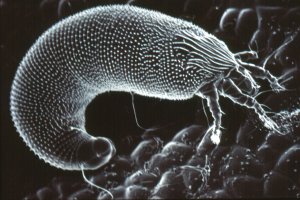
|
Gooseberry and other Ribes mites
Gooseberry mite (C. grossulariae) damages both gooseberry and blackcurrant. However, the damage to blackcurrants is often associated with crops grown in warm moist climates. They also colonise the buds which do not swell and become galled, but the flower initials are killed, and in severe attack yields are reduced. Other, as yet unidentified, mites have been associated with redcurrant in Central Europe. These mites cause bud to swell slightly and internal necrosis is associated with feeding.
In northern Europe, several very closely related Cecidophyopsis species are associated with several wild and cultivated Ribes. The virus vector capability of these mites is unknown.
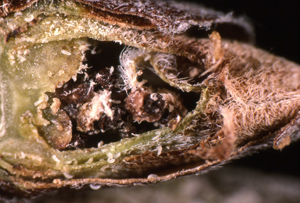
| 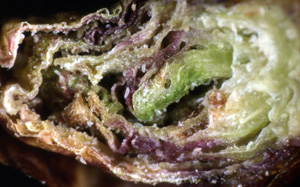
|
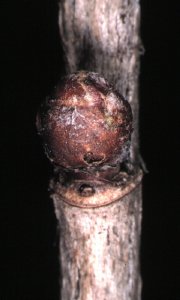
| 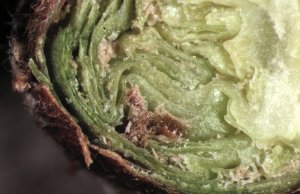
|
Other important Ribes pests
Blackcurrant leaf curling midge
Blackcurrant leaf curling midge (Dasineura tetensi) is becoming more problematic in Northern Britain, particularly in blackcurrant nurseries. Different levels of susceptibility have been observed in blackcurrant cultivars. Cultivar 'Ben Connan' appears to have some resistance.
Clearwing moth
Although Synanthedon tipuliformis are frequently found in Europe and elsewhere in the world, they have been relatively uncommon in Scotland. However, in recent years they have been frequently observed in breeding plots at The James Hutton Institute. These small day-flying moths are brown in colour have three narrow yellow stripes running across the body. The wings are mostly clear, but have orange edges and tips. There occurrence in the north may result from the climate becoming more favourable to the insect. Pheromones are commercially available to attract and trap the males by mating disruption. There is no strong source of resistance available so development of the pest status of this insect will continue to be monitored.
Ribes Aphids
Several aphid species colonise currants in northern Britain. Most damage leaves but are not known to transmit any viruses. When extensive leaf feeding occurs, there is an increased risk of contamination of the fruit by honeydew. Should this become colonised with moulds, such as sooty mould, then the quality is further decreased. At The James Hutton Institute, susceptible genotypes and selections are actively screened out of the breeding lines.
Scale insects
Several scale insects are associated with Ribes. In northern Britain few cause any economic loss, but one in particular, the woolly vine scale (Pulvinaria vitis syn. P. ribesiae) is now found occasionally in Scotland. Apart from weakening the plant, the honeydew produced can be contaminated by sooty mould. Any susceptible plants are screened out as part of the selection process.
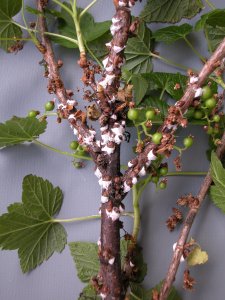
| 
|
Ribes sawflies
In Scotland, there are two important sawflies that are sporadic pests of Ribes, the Gooseberry Sawfly (Nematus ribesii) and the Blackcurrant Sawfly (Nematus olfaciens). Apart from gooseberry, the gooseberry sawfly can cause sever defoliation of Jostaberry whereas the blackcurrant sawfly is found mainly on blackcurrant. As far as we are aware there is no sources of resistance. We continue to monitor the levels of infestation.
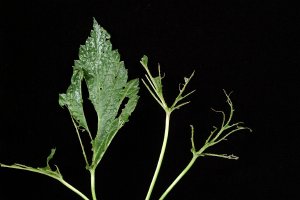
| 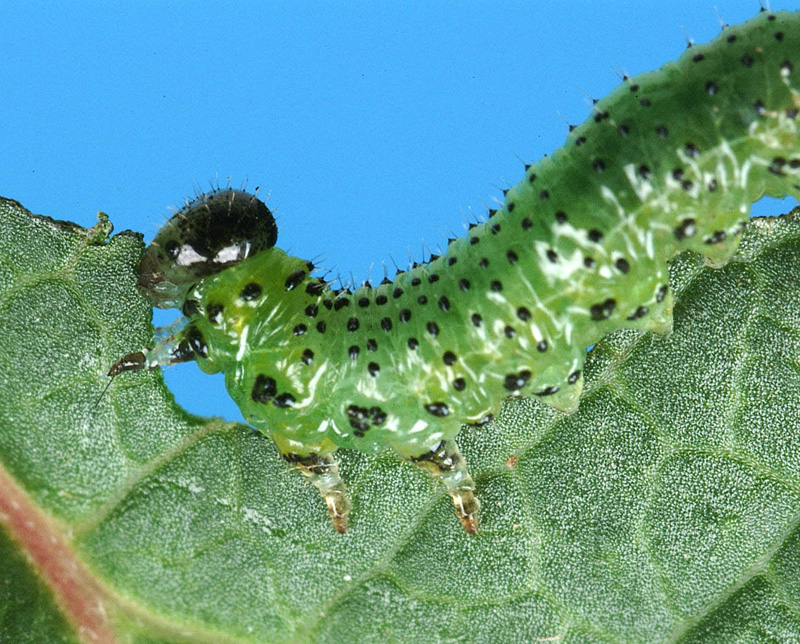
|
| Close up of blackcurrant sawfly feeding on blackcurrant (click on image to enlarge) |
References
- Fenton B, Malloch G, Jones AT, Amrine JW, Gordon SC, A'Hara S, McGavin WJ & Birch ANE (1995) Species identification of Cecidophyopsis mites (Acari: Eriophyidae) from different Ribes species and countries using molecular genetics, Molecular Ecology. 4 383-387.
- Hummer KE, Carter J, Postman JD & Gordon SC (1999) Survey of Gooseberry Mite Infestation in Ribes L. HortScience. 34, 678-680.
